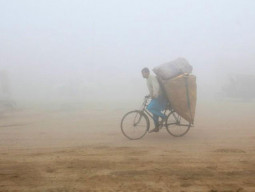
ASER is the largest citizen-led initiative to foster conversation regarding the deplorable state of education. Through a new project titled ‘ASER Innovation’, the team aims at providing the voters with a clear picture on improvement or further deterioration in the education sector in their respective constituencies.
“We are empowering voters to raise questions and press demands to their elected political representatives, and evaluate their performance,” Baela Raza Jamil, ASER Pakistan’s country coordinator and programmes director at the Idara-e-Taleem-o-Aagahi, told The Express Tribune. “ASER Innovation will offer citizens the opportunity to cast votes based on informed choices.”
Starting as a survey of a few rural districts in 2008, ASER has now transformed into the biggest national data set for education and children’s learning levels across the country. Jamil, however, feels that the government policies do not seem to be moving in the right direction.
“Though each national and provincial ASER report issued a strident call for action to both politicians and civil society, very little or no improvement has been observed in six years,” she said. “There is a need to transform the country’s traditional political culture, in which citizens voting preferences get swayed by the so-called, synthetic ‘popular sentiment’.”
The innovation is a call for action to the citizens, especially with the launch of the latest edition of the ASER report in January this year. “By way of the constituency-based statistics, the citizens are expected to engage the MNAs and MPAs in campaigning for their issues the way these politicians campaign for citizen’s votes prior to the election,” said Jamil.
The initiative, in its pilot phase, had focused on four National Assembly constituencies, one in each province, along with their associated provincial assembly seats. ASER teams had conducted representative household-based surveys in the constituencies to evaluate access to education for children between the ages three and 16 years as well as learning outcomes of the ones who are enrolled at schools.
The research findings have been shared with the elected MNAs and MPAs from the surveyed constituencies. In the next stage, ASER intends to disseminate these findings to the citizens residing in these constituencies.
NA 250 Karachi X-II: Dr Arif Alvi (PTI)

In Karachi’s most high profile constituency, the public education system has deteriorated and only parents who cannot afford private schooling send their children to state-run schools.
Some 58% of the fifth grade public school students could not read a story in Urdu or Sindhi, and around 36% of their counterparts at private schools were not any good at it. Public school students performed even worse when it comes to English. Around 62% of them could not read sentences in English as compared to 26% of their counterparts in private schools. Around 41% of the fifth graders at private schools could not do basic two-digit arithmetic division, compared to 71% public school students.
NA 117 Narowal-III: Ahsan Iqbal (PML-N)

With surprisingly good results, the public education system in Narowal has effectively outperformed private schools both in terms of access and learning outcomes. More students (59%) between the ages six and 16 years are enrolled in public schools than private schools. When it comes to learning outcomes, 76% of the fifth graders at public schools were able to read stories in Urdu while 70% of their counterparts at private schools could also read. Students at private schools performed slightly better (66%) in reading English, as compared to 62% of public school students. Moreover, 64% of public school students could do two-digit arithmetic division, compared to 62% of private school students.
NA-259 Quetta-I: Mahmood Khan Achakzai (PkMAP)

Private schools in NA-259 hold around 60% of the total enrolment of children between ages six and 16 years. However, in terms of quality education, these schools fail to perform any better than the public schools, which share 36% of the enrolment.
If 63% of the fifth graders in public schools could not read a story in Urdu, around 57% of their counterparts at private schools could not read either. Around 67% of public school students could not read sentences in English, compared to 49% private school students. Moreover, 62% of the fifth graders at private schools and 69% of public school students could not do basic two-digit arithmetic division.
NA-34 Lower Dir: Sahibzada Mohammad Yaqub (JI)

An overwhelming gender inequality in education and poor learning outcomes in the JI’s stronghold poses grave concerns. Around 74% of the six to 16-year-olds are enrolled at the public schools and another 15% at the private schools. However, male to female ratio stands at 70:30 for every hundred students.
Around 11% out-of-school children are also a challenge for the political leadership. But among those who do attend schools, only 35% of fifth grade students could read a story in Urdu or Pashto, 29% could read sentences in English while 39% could do two-digit arithmetic division.
Published in The Express Tribune, February 6th, 2015.

















COMMENTS
Comments are moderated and generally will be posted if they are on-topic and not abusive.
For more information, please see our Comments FAQ